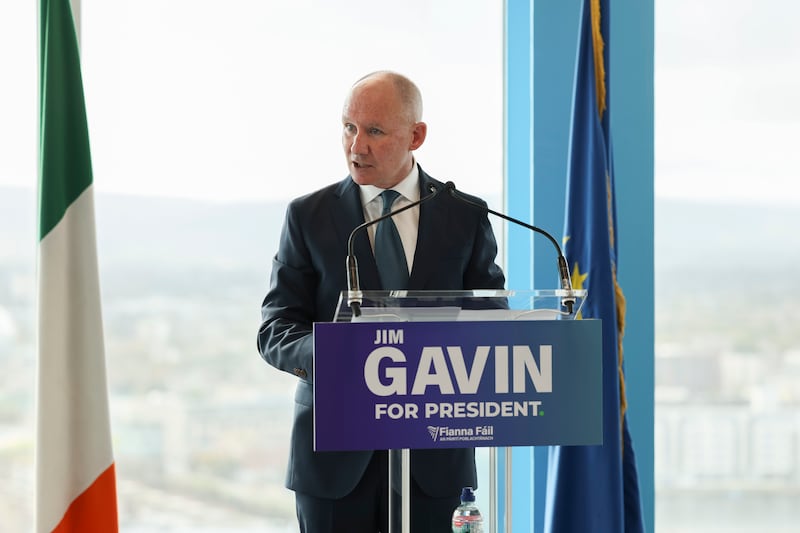The clock is ticking. As of the end of June, companies have a year to make their products accessible to people with a disability or face penalties under new EU legislation.
The European Accessibility Act will come into play by the end of June 2025, requiring certain categories of consumer products and services – ecommerce, banking, telecoms, transport services and audio visual media – to be accessible.
Similar to how GDPR focused our attention on data privacy and forced companies to take action, so too will the European Accessibility Act force companies and services to focus on building accessibility into their products, or pay the penalty – in the case of the Irish legislation, a fine of up to €60,000, a prison term of up to 18 months, or both.
It’s not before time. Around one in four people in Europe identifies as having some form of disability but accessibility of websites, apps and products remains an ongoing issue. The annual WebAIM report, which looks at accessibility across the top one million websites, found 96 per cent had accessibility issues. Those issues ranged from providing alternative text to an image for people with visual issues, to colour contrast that makes sites more difficult to read.
READ MORE
In 2022, an audit carried out by Inclusion and Accessibility Labs (IA Labs) found that almost three-quarters of leading Irish organisations did not have an accessible website. That included private companies, public bodies, schools and universities.
That alone potentially excluded up to 600,000 people in Ireland from accessing services and information online.
In the wake of the Covid-19 pandemic, when the push to digitalisation of products and key services accelerated, preserving and facilitating access for everyone is even more important.
“The ability for people to have the autonomy to live a life that they want in a world that wasn’t designed with them in mind is really the core of what accessibility is about,” says Christopher Patnoe, Google’s head of accessibility and disability inclusion. “Technology is the bridge that brings a person to that tool, to an experience that they want to do.”
While the incoming legislation has been well flagged – Ireland adopted it into law in December 2023 – it may present a challenge for companies that have yet to put a plan in place to ensure they are following the new rules.
Accessibility “overlays” – software that changes a website to allow assistive technologies to understand it – will not be sufficient to meet obligations under the new laws. That means companies have to think more broadly about what changes they will have to make.
Dev/A11y is one start-up hoping to help out. Cofounded by Cormac Chisolm and Patrick Guiney-Fox, the company’s AI-driven compliance management platform is designed to make it easy for businesses to incorporate accessibility into their products as they are building them, assess how accessible their product is and identify what steps they need to take to be compliant in advance of the act coming into force.
Guiney-Fox compares the current state of the web to the time when buildings were inaccessible to people with physical disabilities.
“The internet is what the world was like 30 years ago,” he says. “There’s a quantitative pain to not being accessible.
“There are large budgets being spent on making websites and mobile devices accessible. And 80 per cent of testing at the moment is manual, so there’s a huge human element and time resource put in by either external companies or dev teams themselves to make websites accessible. A lot of the companies that we spoke with, they’ve actually built a product, gone to market and then realised that a number of things aren’t accessible. So they’ve had to retrofit their entire product, which nearly doubles the cost in some instances.”
The changes required for most companies may have the knock-on effect of making sites and services easier to use for everyone. Some of the popular features in products and services today are rooted in accessibility, including speech recognition, captioning and high contrast or dark mode.
Dev/a11y will work with selected design partners from next month as it rolls out its products. Chisolm says the demand is there – and not just locally either. The company has been talking to international organisations that want to sell into Europe in 2025, with the new Act opening doors.
“We saw it with GDPR, where all these businesses just had to be compliant with it; they didn’t want to face those fines. There’s the reputational damage as well in not catering for people with disabilities,” says Chisolm. “Our goal is simple. It’s crazy in the modern day that these things are still not accessibility-compliant.”
Big tech also has a role to play. Apple has been busy in the past couple of years, building on its accessibility tools to open up its platform to more people. In 2023, it announced a new feature that would allow people to create a digital version of their voice.
Among them was Assistive Access, a customisable interface that simplifies apps for calling, messaging, taking photos and playing music, showing the most important elements of the apps so people can access them easily. That could be an emoji-only keyboard, video recording in Messages or a visual grid-based layout for home screens and apps.
The system has an easy-to-read interface, with high-contrast buttons and large text labels to help with identifying the relevant app.
This year, the company went further, adding eye tracking to navigate more easily through iOS and iPadOS for those with physical disabilities using the device’s front camera; music haptics to play taps, textures and refined vibrations matching the audio of music playing; and tools that will help reduce motion sickness when using iOS devices in a moving vehicle.
More is needed though. In March, Google opened its second accessibility discovery centre in Europe, the Middle East and Africa at its Dublin offices, providing a dedicated accessibility space for researchers, engineers and other interested parties at Google to help drive innovation in accessible technology and remove everyday barriers faced by people with disabilities.
The project was set up in consultation with local partners such as Spinal Injuries Ireland, ADHD Ireland, the National Disability Authority, Fighting Blindness and Google’s internal disability alliance employee resource group. For Patnoe, partnering with the community is a core part of making products more accessible.
“It’s inclusive design,” he explains. “Here, we say we want you to build with and for the community. Empathy can only get you part way. I can see why someone who’s blind would need, for example, alt-text in pictures so they can see. But only by partnering with someone who is blind, who lives in a world where people don’t put an alt-text, can they tell you what the problems really mean and help you understand what the tools are that can make it better.”
The plan is to open more of these centres worldwide and feed back what they are learning into Google’s development pipeline, tapping into the local communities to understand the unique needs of different groups and geographies.
It’s not about getting things perfect either. “The biggest lesson that I’ve learned is that you’re never going to get it perfect for everybody,” says Patnoe. “Everybody’s needs are subtly different. In some cases, it can almost be, counter-intuitively, something that makes it accessible for one person makes it inaccessible for another. There’s no such thing as perfection when it comes to accessibility.”
That focus, combined with the new EU legislation, should help push further development in accessibility, opening up technology to those who can most benefit from it.
“As a creator, as somebody who builds stuff, you never want to feel like you’re leaving somebody out,” says Chisolm. “Until this point, accessibility has been an afterthought for a lot of businesses or a ‘nice to have’. It’s no longer a nice to have; it’s a must.”
- Sign up for push alerts and have the best news, analysis and comment delivered directly to your phone
- Find The Irish Times on WhatsApp and stay up to date
- Our In The News podcast is now published daily – Find the latest episode here



















